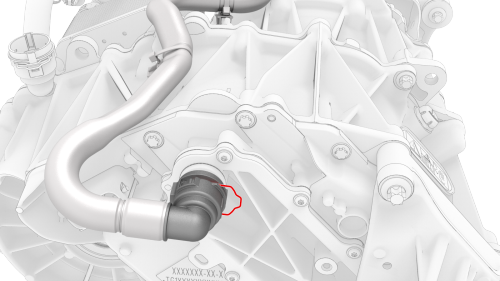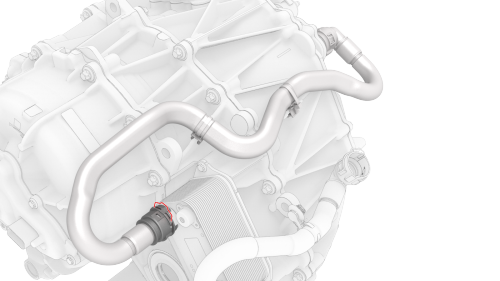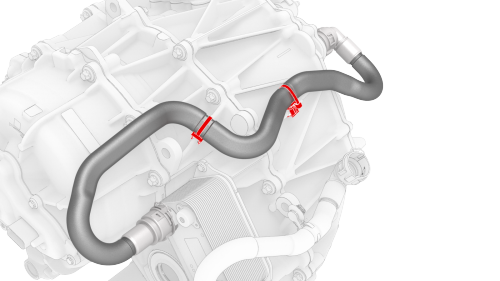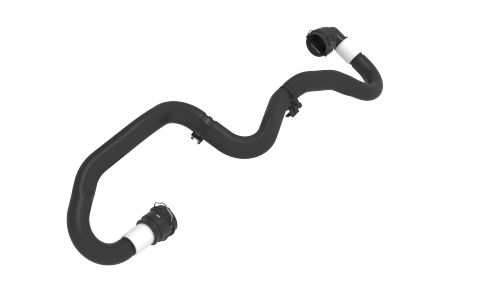Tesla Model 3: Hose - Inverter to Heat Exchanger - Front Drive Unit (Remove and Replace)
Tesla Model 3 2017-2025 Service Manual / Front Drive Unit / Front Drive Inverter / Hose - Inverter to Heat Exchanger - Front Drive Unit (Remove and Replace)

Remove
- Remove the front subframe assembly from the vehicle. See Subframe Assembly - Front (Dual Motor) (Remove and Install).

- Release the clip that attaches the front drive unit inverter-heat exchanger hose to the inverter coolant outlet, and then disconnect the hose.

- Release the clip that attaches the front drive unit inverter-heat exchanger hose to the heat exchanger coolant inlet, and then disconnect the hose.

- Release the clips that attach the front drive unit
inverter-heat exchanger hose to the exterior of the
front drive unit, and then remove the hose from the
front drive unit.

Install
Installation procedure is the reverse of removal.Caution: Perform a push-pull test to verify that the hose is fully seated.
READ NEXT:
 Breather - Front Drive Unit (Remove and Replace)
Breather - Front Drive Unit (Remove and Replace)
Remove
Remove the front subframe assembly. See
Subframe Assembly - Front (Dual Motor) (Remove and Install).
Remove the front drive unit breather.
Torque 5 Nm
Install
Installation pro
 Bushing - Gearbox - Front Drive Unit (Remove and Replace)
Bushing - Gearbox - Front Drive Unit (Remove and Replace)
Bushing - Gearbox - Front Drive Unit - Remove
SPECIAL TOOLS
Engine Motor Stand, 1000 lb. (NA, APAC)
(1
SEE MORE:
 Headliner (Remove and Install)
Headliner (Remove and Install)
Remove
Remove the RH side rail trim. See
Trim - Side Rail - LH (Remove and Replace).
Push to open the RH rear coat hook.
Pry open the RH rear coat hook screw cover with a small flat head
screwdriver.
LH shown, RH similar
Remove the screw that attaches the RH rear coat hook to t
 Powertrain Coolant (Drain and Refill)
Powertrain Coolant (Drain and Refill)
Powertrain Coolant - Drain
SPECIAL TOOLS
Drive Unit Pressure Test Fixture (1053600-00-C)
Kit, Coolant Leak Test Adapters, Model 3
(1132185-00-B)
Kit, Coola
© 2019-2025 Copyright www.tmodel3.com

